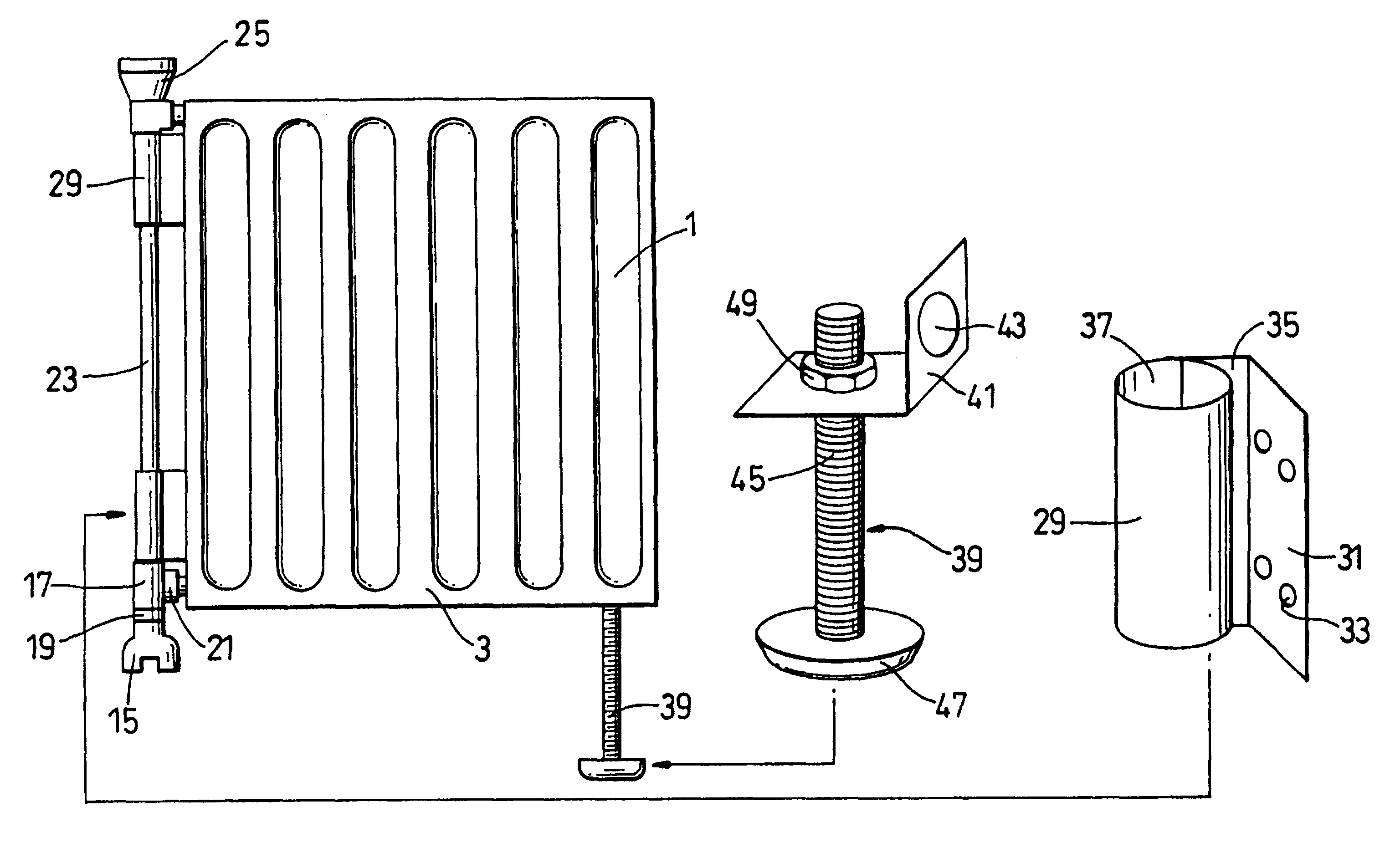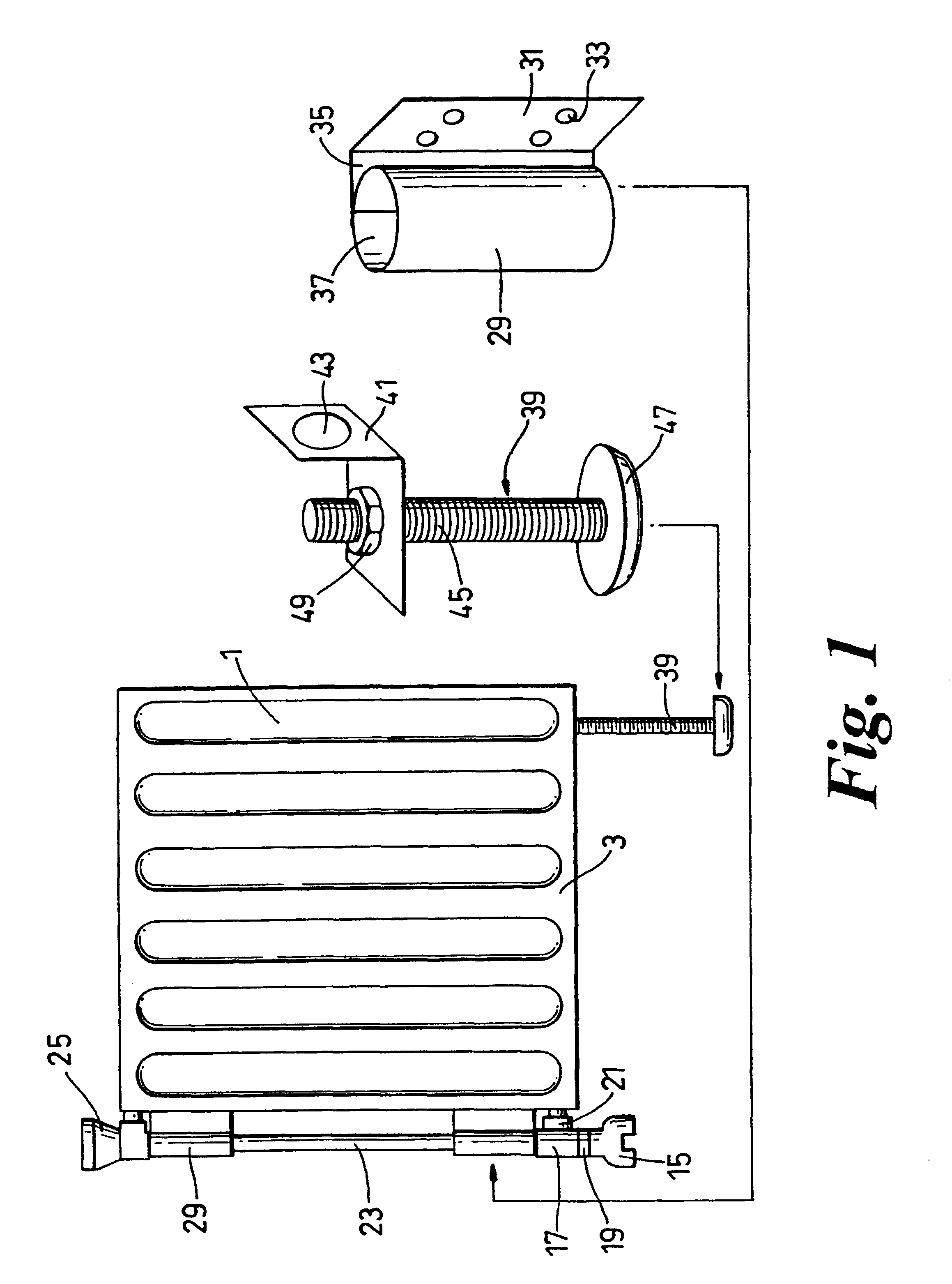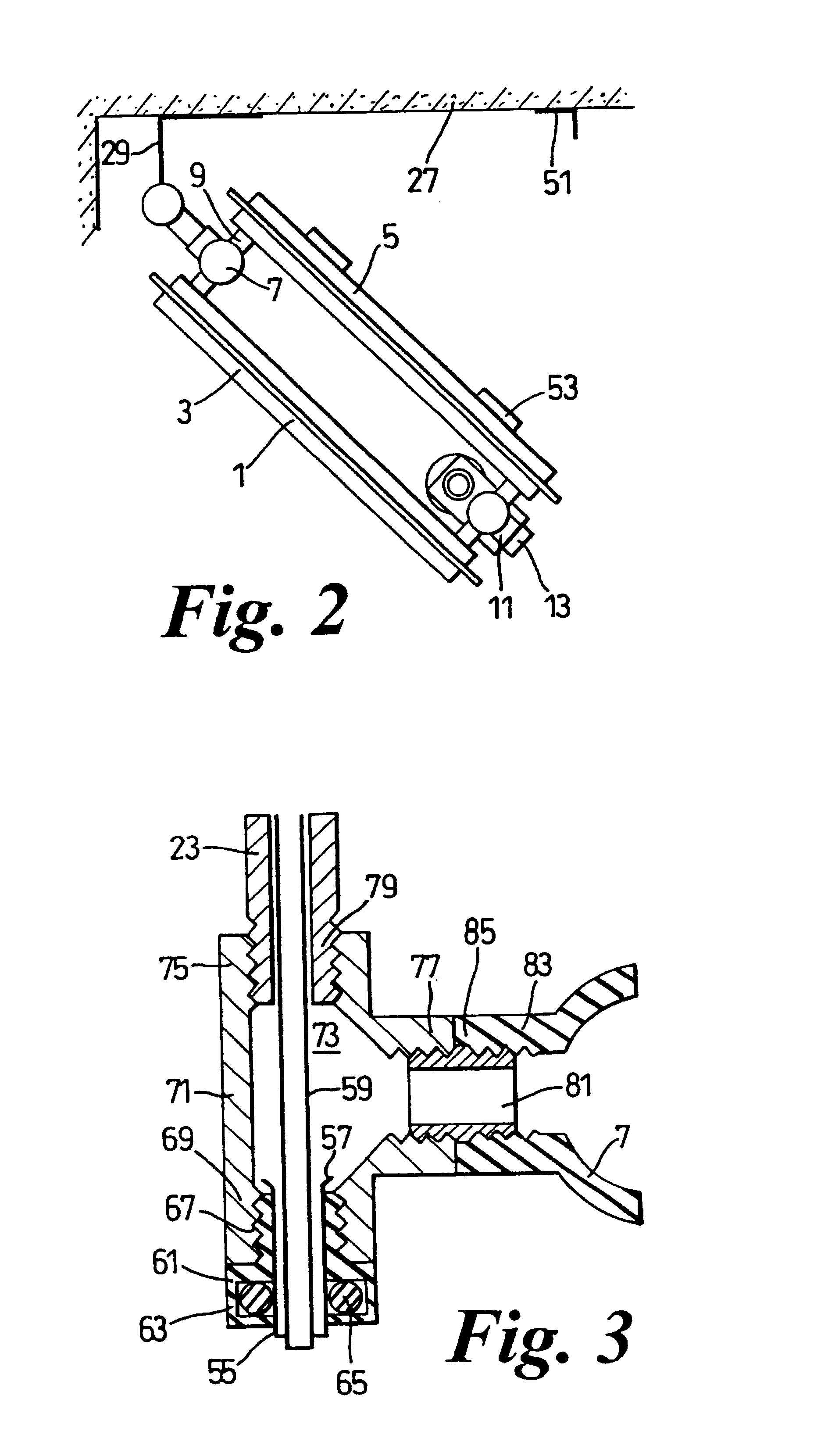Central heating radiators
- Summary
- Abstract
- Description
- Claims
- Application Information
AI Technical Summary
Benefits of technology
Problems solved by technology
Method used
Image
Examples
Embodiment Construction
An embodiment of the present invention will now be described, by way of example only and with reference to the accompanying drawings.
A central heating radiator assembly comprises a radiator panel 1 which, in this case, comprises two sub-panels 3, 5 interconnected by two pairs of upper and lower radiator bosses. Each radiator boss 7 is connected to each panel 3, 5 by means of connecting arms 9. Each boss 7 is also provided with a boss inlet 11. On the right hand side of radiator panel 1, as seen in FIG. 1 the two boss inlets 11 are closed by radiator plugs 13. The bosses on the left hand side of the panel form part of a water inlet for the panel (upper boss) and a water outlet for the panel (lower boss).
Located at the lower left hand corner of panel 1 is a standard flow and return valve 15 by means of which heating water may be led to the panel 1 and water, exiting from panel 1, may be led away from the radiator. Valve 15 is connected to a T-junction connector 17 by means of a plug 1...
PUM
 Login to View More
Login to View More Abstract
Description
Claims
Application Information
 Login to View More
Login to View More - R&D
- Intellectual Property
- Life Sciences
- Materials
- Tech Scout
- Unparalleled Data Quality
- Higher Quality Content
- 60% Fewer Hallucinations
Browse by: Latest US Patents, China's latest patents, Technical Efficacy Thesaurus, Application Domain, Technology Topic, Popular Technical Reports.
© 2025 PatSnap. All rights reserved.Legal|Privacy policy|Modern Slavery Act Transparency Statement|Sitemap|About US| Contact US: help@patsnap.com



